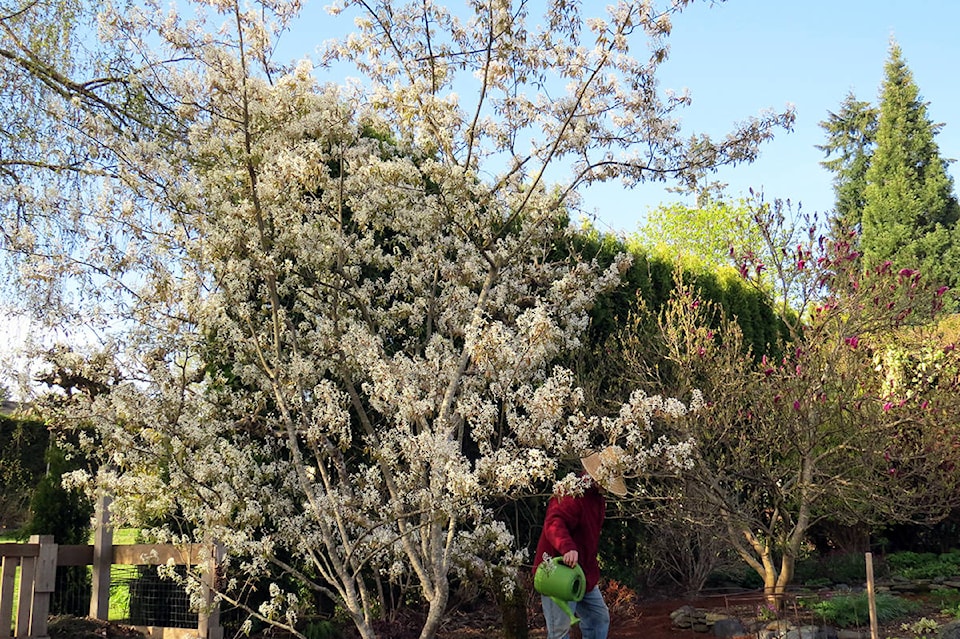Leslie Cox
Special to The Record
Feeling very much like the March hare in Alice in Wonderland these days: “I’m late, I’m late.”
But instead of that important date the March hare was trying to keep, I am running late in keeping up with spring in the garden.
It seems the plants are happy the soil is warming up. Well, let’s face it. We are happy the temperatures are high enough to shed our winter coats.
Speaking of happy, husband John is an absolute giggle every morning. He heads out into the garden first thing with teacup in hand to wander about his garden. (He lords over the back garden while I am the Duchess of the front garden. It works for us; no mutiny in our marriage.)
After a while, John wanders back inside for his second cuppa, trilling his mantra, “I love spring! I love spring!”
I could not agree more. Every day through spring… in our garden, at least… there is a new discovery.
While inspecting my rhubarb for any stalks ready for harvesting, I suddenly noticed there were flower buds on the Akane, Honeycrisp and Spartan branches of the apple espalier. But nothing yet on the Gravenstein, Melrose and Jonagold branches.
Our serviceberry tree, Amelanchier x grandiflora ‘Princess Diana’, is now royally resplendent in white flowers. There have been decent numbers of pollinating bees in our garden already, so my hope is they have been busy in the serviceberry tree for a decent harvest of berries this year.
Nearby, Magnolia x soulangeana ‘Susan’ has been building up its floral parts for the garden scene, albeit at a tantalizingly slow pace. Placement in the garden is everything because the same magnolia sited in full morning sun in the neighbour’s garden has been in bloom for a few days. John is so jealous.
He is also lamenting the growing flower buds on the various clematis in my garden. His clematis are slow this year. The cold winter has killed some of his clematis back to their roots. There is no new growth showing on old stems, only new shoots coming out of the ground. It is winters like the one past with -18.5C overnight temps which make us thankful we always make a planting hole 20-24 inches deep for new clematis. Even if it means getting out the drill steel.
I must admit to my own impatience over my hostas’ reluctance to get a move on now that spring is here. ‘Komodo Dragon’ is the only one which is high enough out of the ground to have three leaves unfurling. The rest of the hostas are only poking the tips of their noses out with a very few brave enough to stretch up a couple of inches at best.
The ferns are not that much ahead of the hostas either, which makes it difficult to know where I should put my ‘Nancy Evans’ rhodo. This is a transplant job I should have done last fall when I realized ‘Nancy Evans’ was getting too much sun in its present location. Why is it I never seem to catch up on the chores?
But I did catch the American bullfrog that showed up in our pond this spring. Have lost track of the catch count now but am determined to keep on top of this alien. With females laying 20,000 eggs annually to our native frogs’ average of about 5,000 eggs, it is small wonder bullfrogs are taking over the amphibian population. And bullfrogs also eat salmon fry, snakes, small birds and everything else of comparable size.
If you have a pond, do your bit to eradicate this alien. Native species depend on us because frog predators do not like the taste of bullfrogs.
Leslie Cox co-owns Growing Concern Cottage Garden in Black Creek. Her website is at www.duchessofdirt.ca and her column appears every second Thursday in the Record throughout the spring and summer months.
